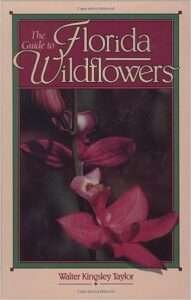
Pink Native Flowers Common to Central Florida
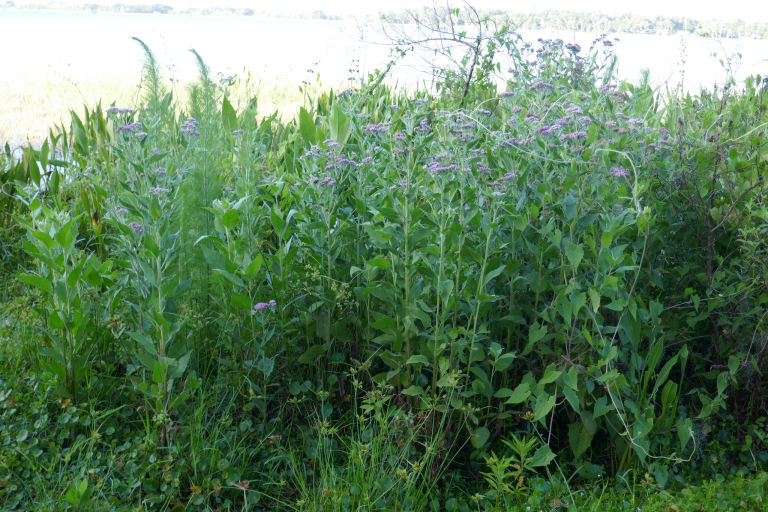
Asclepias incarnata
(Swamp Milkweed)
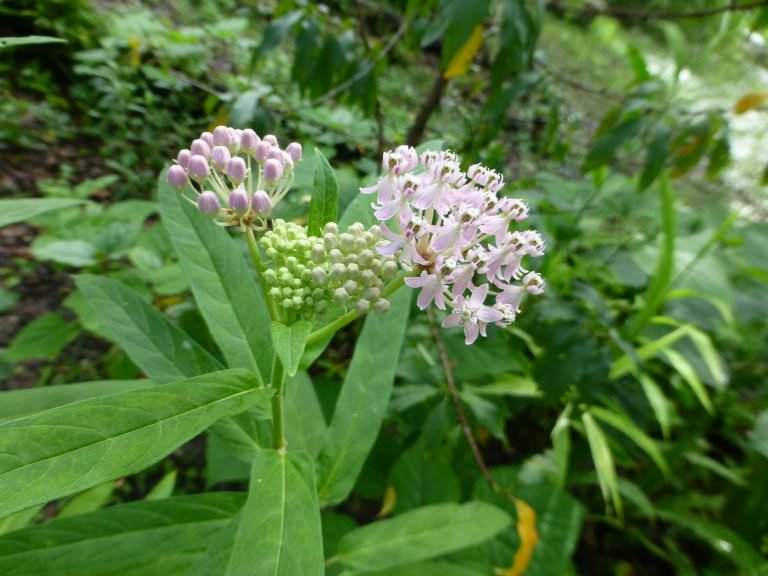
Latin Name: Asclepias incarnata
Common Names: Swamp milkweed, pink milkweed and rose milkweed.
Family: Swamp milkweed is in the Apocynaceae, or dogbane, Family.
Form: Swamp milkweed is a perennial wildflower that grows to a height of about 3 feet.
Leaves: The leaves are opposite with entire margins. They are stalked and are oblong to linear-lanceolate in shape. If broken the leaves exude a milky sap.
Flowers: The pink flowers appear in umbels at the end of the plant stalks. Flowering occurs in the summer and fall.
Habitat: Swamp milkweed grows in moist areas such as wet woods, stream banks, lake margins, drainage ditches and wet fence rows.
Native Range: Swamp milkweed is native to Alabama, Florida, Georgia, Louisiana, Mississippi, North Carolina, and South Carolina.
Landscape Use: In the home landscape it grows in full sun with average to moist soils. It needs a good source of sunlight in order for it to produce flowers, and constant moisture to keep it thriving. Does well in containers.
Wildlife Uses: The flowers are a source of nectar for many insects including bees, beetles, butterflies, flies, and wasps. The foliage, and seed pods, are larval food for the monarch, queen, and soldier butterflies.
Propagation: Can be grown easily from seed and transplanted when small. It can also be propagated by cuttings.
I sell swamp milkweed (Asclepias incarnata) seeds here at my eBay Store.
Callicarpa americana
(Beautyberry)

Latin Name: Callicarpa americana
Common Names: French mulberry, Bermuda mulberry, foxberry, and turkeyberry.
Family: It is found in the Verbenaceae, or verbena, family.
Form: Beautyberry is a deciduous shrub that grows to approximately 8 feet in height, and almost as wide, with an open branching habit.
Leaves: The leaves are deciduous, opposite, simple, elliptic in shape, and have finely toothed margins. A covering of hair gives young stems and the undersides of leaves a white appearance. Each hair contains an oil gland that gives the plant its distinctive odor.
Flowers: Small pink flowers are found in axillary clusters, in whorls around the stem, and appear in the spring and summer providing food for pollinators.
Habitat: Beautyberry can be found growing in woodlands, pinelands, thickets, and fence rows.
Native Range: It occurs naturally from Virginia to Arkansas south to Florida. It also occurs in Bermuda, Cuba, and Mexico.
Landscape Use: In the home landscape beautyberry can be grown in full sun to part shade with average to dry soils.
Wildlife Uses: The nectar is an important part of the diet of many bee and wasp species, and their attraction creates rich foraging areas for insect eating birds and reptiles.
The berries are not only incredible to look at, but they also provide an important winter food source for wildlife. Wild turkeys, bluebirds, robins, yellow bellied sapsuckers, myrtle warblers, cardinals, catbirds, mockingbirds, brown thrashers, quail, towhees, and many other birds rely on the berries as an energy source.
Propagation: Beautyberry transplants extremely well, and can be grown from cuttings and seeds. Cuttings should be kept moist while transplants should be watered regularly until they become established. Propagation can also be achieved with ripened seeds that have been cleaned and stored at room temperature until the next growing season.
Carphephorus corymbosus
(Florida Paintbrush)

Latin Name: Carphephorus corymbosus
Common Names: Florida Paintbrush and Coastal Plains Chaffhead.
Family: It is found in the Asteraceae, or aster, Family.
Habit: A perennial wildflower that grows to a height of three feet when in bloom.
Leaves: When not in bloom the leaves form a basal rosette of spatulate leaves. The stem leaves are alternate and elliptic in shape.
Flowers: Flowers appear in late summer and early fall with some occasionally blooming into early winter.
Habitat: Pinelands and dry habitats.
Landscape Use: It grows in full sun to part shade with average to dry soils.
Native Range: It is native to Florida, Georgia and South Carolina. It grows in zones 8a to 10b.
Wildlife Use: Florida paintbrush is a favorite nectar plant for butterflies and bees!
Propagation: It can be grown from seed and transplanted. When transplanting remove any flowers so the plant can use its resources to regrow roots.
Centrosema virginianum
(Spurred Butterfly Pea)
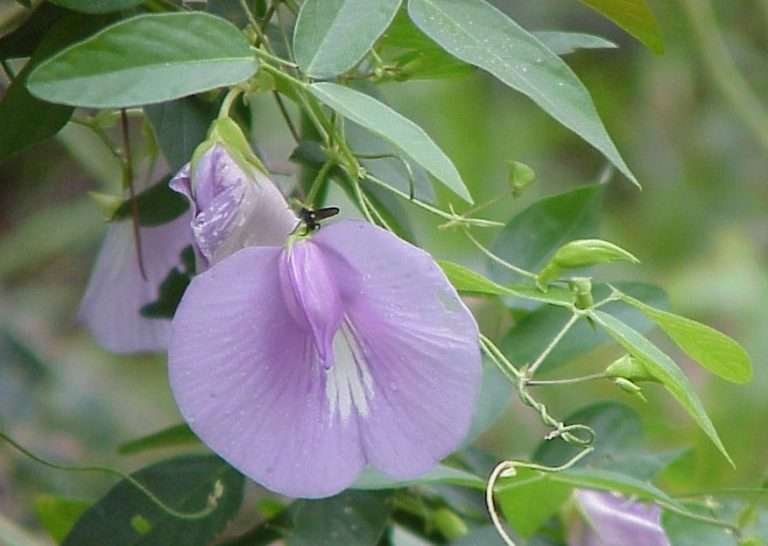
Latin Name: Centrosema virginianum
Common Names: spurred butterfly pea, wild blue vine, wild pea, and blue bell.
Family: It is found in the Fabaceae, or bean, Family.
Form: A perennial vine that grows to about 10 feet in length. The foliage is very delicate and can be trained to grow upon nearby shrubs or trees.
Leaves: Alternate, with three leaflets that are ovate in shape. The margins are entire.
Flowers: Pink flowers appear mainly in the summertime.
Habitat: It is found growing naturally in hammocks, pineland and sandhills.
Landscape Use: In the home landscape it grows in part shade to shade with average to dry soils. It can be placed at the base of a shrub or tree and allowed to grow up into it without damaging the plant because the vine is delicate.
Native Range: Spurred butterfly pea is native to Arkansas, Delaware, Florida, Georgia, Illinois, Kentucky, Louisiana, Maryland, Missouri, New Jersey, North Carolina, Oklahoma, South Carolina, Tennessee, Texas and Virginia.
Wildlife Use: Butterflies and bees use the flowers are a nectar source and the seeds are eaten by some songbirds and small mammals.
Propagation: It is best propagated by seed, but can be transplanted if care is taken to obtain the entire tap root which may be very deep. When transplanting trim off most of the upper growth and flowers to give the plant energy to recover from being transplanted.
Cercis canadensis
(Redbud)
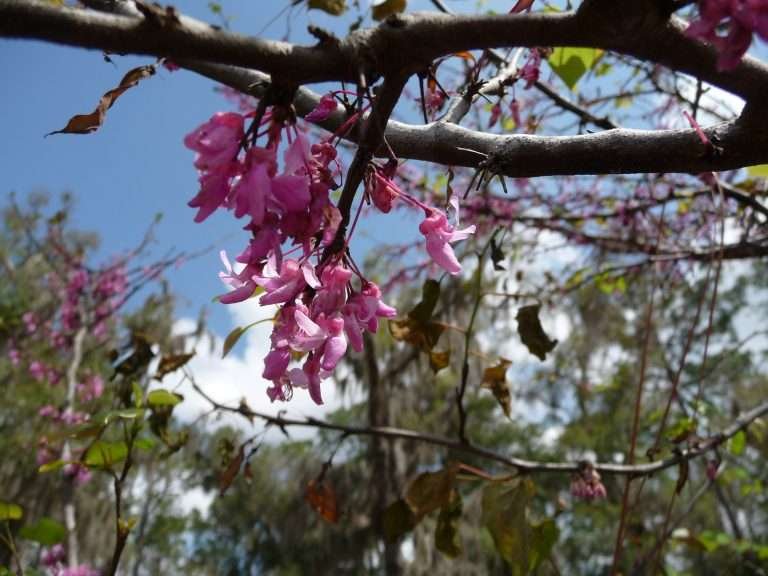
Latin Name: Cercis canadensis
Common Names: Red bud, Redbud, and Judas tree.
Family: Redbud is in the Fabaceae, or bean, family.
Form: A small deciduous tree that reaches a height of about 20-30 feet at maturity.
Leaves: Redbud leaves are alternate and heart shaped with entire margins. They are from 7 – 12 cm long.
Flowers: The deep pink to magenta flowers of redbud appear in late winter in central Florida. The flowers emerge on bare branches before the leaves appear.
Habitat: It occurs naturally in the shade of woodlands, mesic hammocks. and roadsides. It can also be found in riparian areas but only when it’s high enough to be growing in well drained soils.
Landscape Use: In the home landscape it grows in part shade to full shade with average to moist soils. It is an understory tree so can be grown near larger trees.
Native Range: It grows from Canada south to Florida and west to Central Texas. It is native to AL, AR, CT, DC, DE, FL, GA, IA, IL, IN, KS, KY, LA, MA, MD, MI, MO, MS, NC, NE, NJ, NY, OH, OK, PA, TN, TX, VA, AND WV. It grows in zones 5 to 9.
Wildlife Use: The flowers are eaten by some birds and small mammals. The dried seeds are eaten by ground birds and songbirds. The flowers can be eaten in salads.
Propagation: Propagation: Seeds are the main source of propagation because cuttings are notoriously difficult. Soak overnight until they swell and double in size.
Clematis reticulata
(Netleaf Leather Flower)
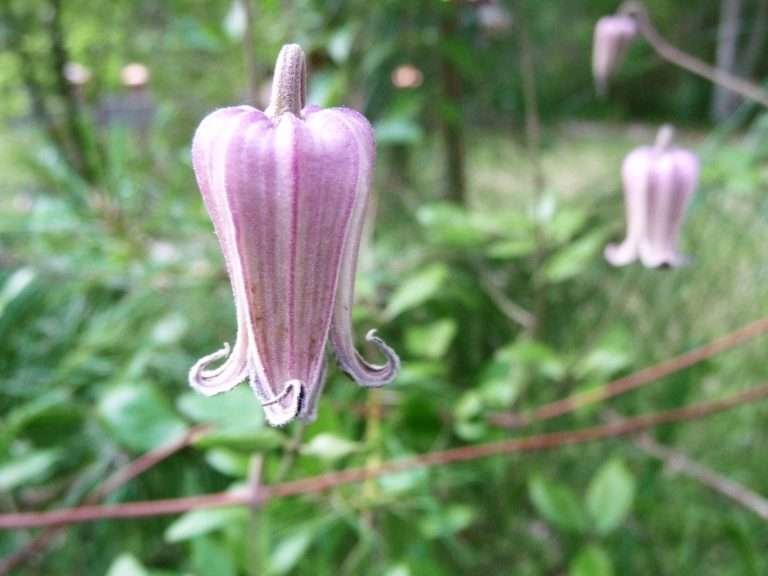
Latin Name: Clematis reticulata
Common Names: Netleaf Leather Flower
Family: It is found in the Ranunculaceae, or buttercup, Family.
Form: A deciduous vine with very weak stems. It grows to about ten feet in length.
Leaves: Its leaves are pinnately compound and have three to nine leaflets that are ovate to linear. The leaflets are reticulate which means they have a distinct network of veins. Hence the common name.
Flowers: The bell shaped flowers, which are technically sepals because they lack petals, are pink to purple in color and appear in the spring and summer.
Habitat: It occurs naturally in pinelands, woodlands, and sandhill habitats.
Native Range: It is native to Alabama, Arkansas, Florida, Georgia, Kentucky, Louisiana, Mississippi, Oklahoma, South Carolina and Texas.
Landscape Use: In the home landscape it will flourish in just about any soil with average moisture and part shade. It’s a great plant for xeriscaping because once it is established it takes no care whatsoever.
It is light enough to allow it to grow upon nearby shrubs or trees as a support.
Wildlife Uses: The flowers are a nectar source for bees and they are a bumblebee favorite. The seeds are eaten by birds and small mammals.
Propagation: It can be grown from seeds and transplanting. When digging up a specimen be sure to dig around the main stem, to loosen the soil, and follow it down to the roots. Be very careful because these vines are very fragile and will break easily where the main stem connects to the roots. However, if you can obtain the root ball it will regrow very quickly.
The seeds require a 2 – 3 month cold stratification process so store them in the refrigerator until they are ready.
Eupatorium fistulosum
(Joe Pye Weed)

Latin Name: Eupatorium fistulosum
Common Names: Joe Pye Weed and Queen of the Meadow.
Family: It is found in the Asteraceae, or aster, Family.
Form: A wildflower that grows to a height of 6 feet or more. The stems are hollow.
Leaves: The leaves appear on stalks in whorls of 4 to 7. The margins are scalloped or toothed with pointed tips.
Flowers: Joe pye weed has large flower heads that are pink in color and appear in the late spring, summer and fall.
Habitat: It naturally occurs in wet meadows and open areas in woodlands.
Native Range: Its native range is to AL, AR, CT, DC, DE, FL, GA, IL, IN, KY, LA, MA, MD, ME, MI, MO, MS, NC, NH, NJ, NY, OH, OK, PA, RI, SC, TN, TX, VA, VT, and WV. It grows in the north and central part of Florida.
Landscape Use: In the home landscape joe pye weed should be planted in natural areas that are wet or retain some moisture. It is best planted in wilder areas of your green space.
Wildlife Uses: The large flower heads are used as a nectar source for butterflies, bees, and other pollinators. Some songbirds, such as the swamp sparrow, eat the seeds.
Propagation: Can be started by seed, and also transplants. As usual be sure to remove flower stalks to the plant can focus on repairing its roots from the transplanting process. New growth will show up soon.
Galactia volubilis
(Eastern Milkpea)
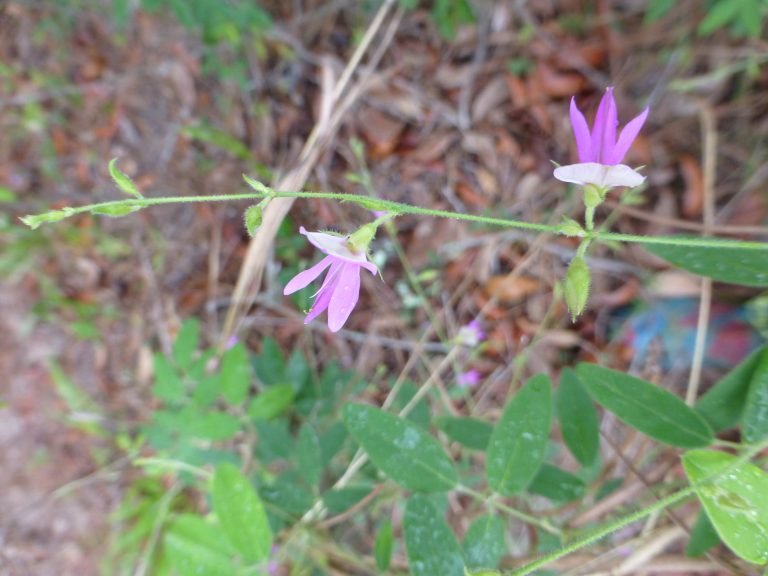
Latin Name: Galactia volubilis
Common Names: Eastern milkpea and milk pea.
Family: It is in the Fabaceae, or bean, Family.
Form: A delicate, herbaceous, vine that grows 3-4 feet in length. It sends its tender branches up nearby vegetation if not given a climbing support.
Leaves: Alternate, with three entire leaflets. The leaflets are oblong, elliptic, or ovate.
Flowers: Small lavender-pink colored flowers appear in the summer and fall.
Habitat: Sandhills and open hammocks.
Native Range: It is native to the following states: AL, AR, DC, DE, FL, GA, IL, IN, KS, KY, LA, MD, MO, MS, NC, NJ, NY, OH, PA, SC, TN, TX, VA, AND WV. It grows in zones 7 to 11.
Landscape Use: In the home landscape it grows in part-shade with average moisture. It can be planted at the base of a shrub and allowed to climb into it. It is a delicate vine and will not harm the supporting plant. However, it reseeds readily so it would not be desirable in a formal garden bed.
Wildlife Uses: Small butterflies and bees use the flowers as a nectar source. Songbirds and small mammals eat the flowers, beans, and dried seeds. Galactia species are larval foods for the Ceraunus blue butterfly.
Propagation: Grown from seeds. The root grows very deep so transplanting may be difficult unless you can find the main root.
Geranium carolinianum
Wild Geranium
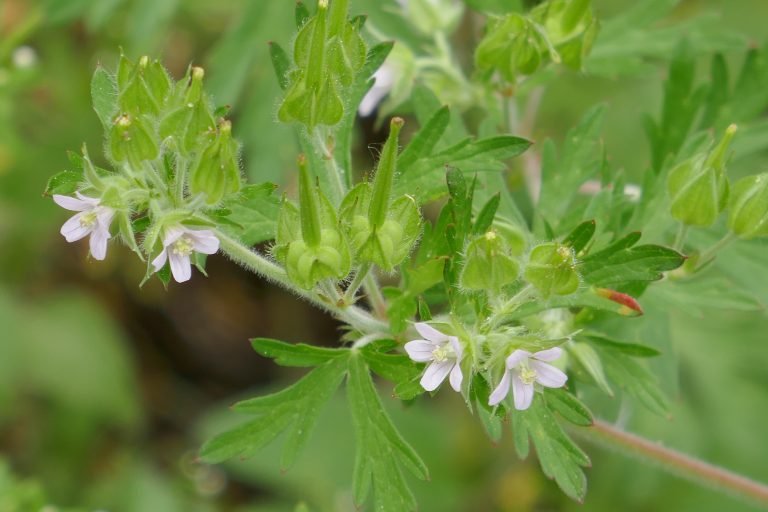
Latin Name: Geranium carolinianum
Common Names: Wild geranium and Carolina cranesbill.
Family: Wild geranium is found in the Geraniaceae, or geranium, Family.
Form: An annual wildflower that grows to a height of 2 feet.
Leaves: Opposite, palmately lobed with deep clefts.
Flowers: Small pink flowers appear in the spring, summer and fall.
Habitat: It grows in disturbed sites, open woods and lawns.
Native Range: It is native to the following states: AL, AR, AZ, CA, CT, DC, DE, FL, GA, IA, ID, IL, IN, KS, KY, LA, MA, MD, ME, MI, MN, MO, MS, MT, NC, ND, NE, NH, NJ, NM, NV, NY, OH, OK, OR, PA, RI, SC, SD, TN, TX, UT, VA, VT, WA, WI, WV, and WY.
Landscape Use: It grows in average to dry soils in part shade to full sun.
Wildlife Uses: The small pink flowers are used by butterflies and bees as a nectar source and the seeds are eaten by songbirds and small mammals.
Propagation: Can be grown from seed or transplanting specimens.
Hibiscus grandiflorus
(Swamp Hibiscus)

Latin Names: Hibiscus grandiflorus
Common Names: Other common names include large-flowered hibiscus, pink swamp hibiscus, swamp rosemallow, swamp Rose-mallow and velvet hardy mallow
Family: Swamp hibiscus is in the Malvaceae, or mallow, family.
Form: This is a shrub-like wildflower that gets large woody stems. It is deciduous and grows to a height of about 6 feet and about 4 feet wide.
Leaves: The leaves are alternate, stalked and grayish green in color. Their shape is ovate to deltoid and sometimes heart shaped. The surface is velvety. Some leaves may have three lobes while others will not. The margins are serrate.
Flowers: Swamp hibiscus flowers are huge pink beauties and appear in the spring, summer and early fall.
Habitat: It is found naturally occurring in lake sides, marshes, wetlands, swamps and wet areas.
Native Range: It is native to Alabama, Florida, Georgia, Louisiana, Mississippi, and Texas. It grows in zones 8a to 11.
Landscape Use: In the home landscape it will need constant water so a site that has poor drainage is a good location, or container grown. It needs a lot of room to grow because of its large size.
Wildlife Uses: The flower nectar attracts butterflies, bees, and beetles.
Larval host of Gray Hairstreak, Painted Lady Butterfly, Common Checkered Skipper and Tropical Checkered Skipper butterflies and four moths : Pearly Wood Nymph, Yellow Scallop Moth, Io Moth, and Delightful Bird-Dropping Moths.
Propagation: It can be grown from seed and transplanted. When transplanting be sure to remove any flowers and most of the upper foliage so it can focus on recovering.
Ipomoea cordatotriloba
Tievine
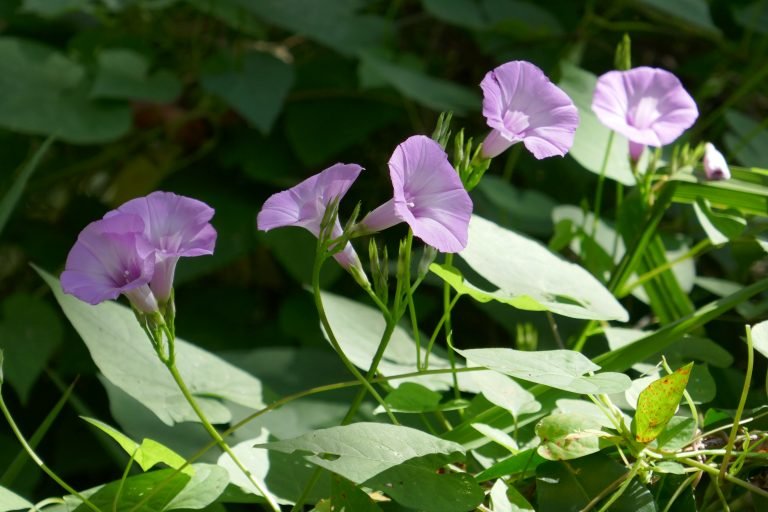
Latin Name: Ipomoea cordatotriloba
Common Names: Tievine
Family: Tievine is in the Convolvulaceae, or morning glory, Family.
Form: Tievine is an annual vine that grows to roughly 10 feet in length.
Leaves: The leaves are alternate, hairy, with some having lobes and others not. They are ovate in shape.
Flowers: The flowers are large pinkish purple morning glory trumpets. They appear all year long in our area.
Habitat: It occurs naturally in disturbed sites, fence rows, thickets, and pastures.
Native Range: It is native to the following states: AL, AR, FL, GA, LA, MS, NC, SC, and TX.
Landscape Use: In the home landscape it can be planted at the base of existing trees and allowed to climb upwards. It does well on a trellis.
Wildlife Uses: The flowers are a nectar source for bees and butterflies.
Propagation: Propagation is generally achieved by seed, but small plants can be transplanted as well.
Kosteletzkya pentacarpos
(Saltmarsh Mallow)
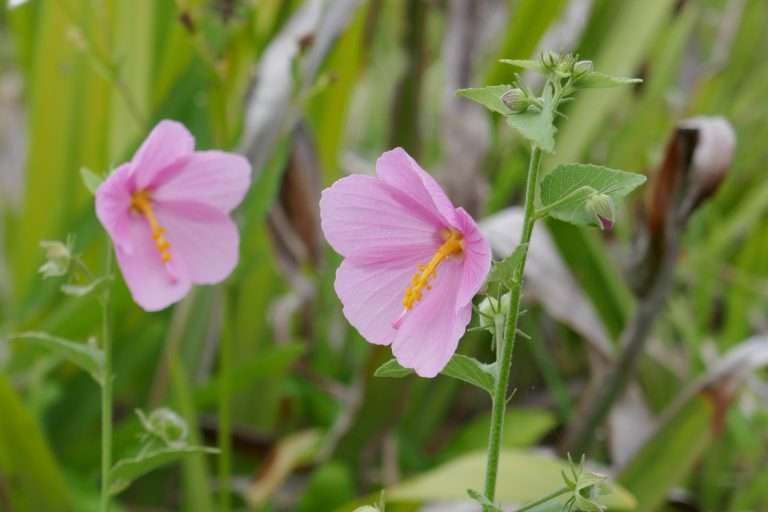
Latin Name: Kosteletzkya pentacarpos
Common Names: Virginia Saltmarsh Mallow, Virginia Fen-rose, Saltmarsh Mallow, and Seashore Mallow.
Family: Saltmarsh mallow is in the Malvaceae, or mallow, family.
Form: A small shrub that grows to a height of about 3 feet.
Leaves: The leaves are alternate and stalked. They may have 3-5 lobes, or none at all. The margins are undulating or toothed.
Flowers: The flowers are a brilliant pink and appear in the spring, summer and fall.
Habitat: It is found in marshes, coastal plains, swamps, and riparian areas.
Native Range: It is native to the following states: AL, DE, FL, GA, LA, MD, MS, NC, NJ, NY, PA, SC, TX, and VA.
Landscape Use: In the home landscape it can be grown in moist areas as well as containers. It grows in full sun with moist soils.
Wildlife Uses: The flowers are a nectar source for many insects including bees and butterflies.
Propagation: It can be grown from seed, cuttings, or transplants.
Mimosa strigillosa
(Powderpuff)
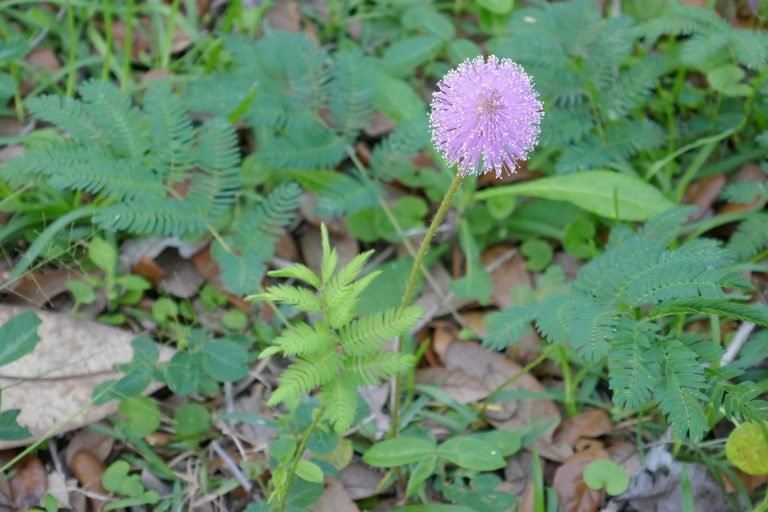
Latin Name: Mimosa strigillosa
Common Names: powderpuff, sunshine mimosa, and sensitive plant.
Family: It is in the Fabaceae, or bean, Family.
Form: Low growing wildflower that rambles and grows similar to a ground cover, but not very dense. This variety does not have thorns.
Leaves: Evergreen and bipinnately compound. The leaflets are slender and linear, and close when touched.
Flowers: Pink puffballs appear in the spring, summer and fall.
Habitat: Stream banks, riparian areas, disturbed sites, and pinelands.
Native Range: Mimosa strigillosa is native to the following states: AR, FL, GA, LA, MO, MS, and TX.
Landscape Use: In the home landscape it can be grown in a variety of soils that are not necessarily moist. It does not tolerate standing water so the soil must be well drained. Plant in part shade.
Wildlife Uses: The flowers are a nectar source for small pollinators, and some animals eat the seeds.
Propagation: Grown from seed, transplanting, and root cuttings. It transplants very easily. The plant usually roots at each stem node so even if you break off most of the plant as long as there are roots at some of the nodes it will recover and regrow.
Pluchea odorata
(Marsh Fleabane)
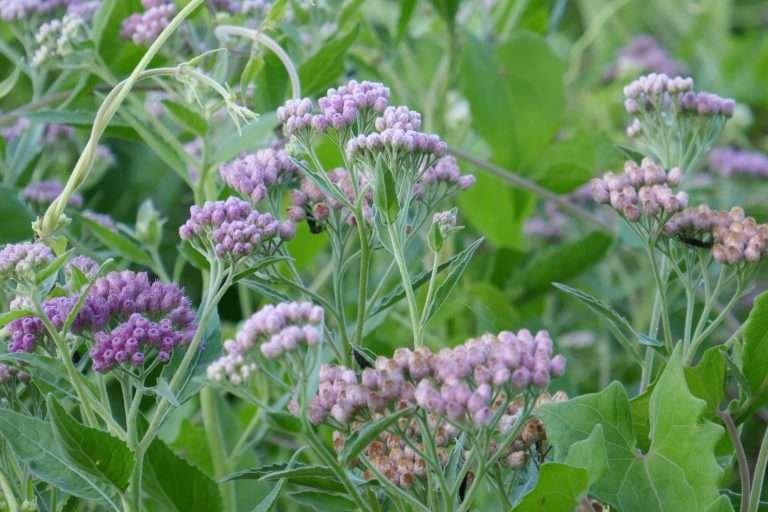
Latin Name: Pluchea odorata
Common Names: Other common names include saltmarsh fleabane and camphorweed.
Family: Marsh fleabane is in the Asteraceae, or aster, Family.
Form: Marsh fleabane is a perennial wildflower that grows to a height of 3-6 feet. Some literature states that it is an annual, but I’ve found it to come back from the roots in more than a few instances. It will certainly re-seed where the parent plant was grown.
Leaves: The leaves are alternate. Their shape is generally elliptic-ovate to lanceolate with toothed margins. The leaves are stalked.
Flowers: The flowers appear all year except for the coldest part of our winter. The flower heads are tubular and don’t have petals. They are a pretty pale purple.
Habitat: Marsh fleabane grows in moist areas like wet woods, stream banks, lake margins and other wet areas such as drainage ditches and wet fence rows.
Native Range: Marsh fleabane is native to AL, AR, CT, FL, GA, IA, IL, KY, LA, MA, MD, MI, MO, MS, NC, NY, OH, SC, TN, TX, and WI.
Landscape Use: In the home landscape it grows in full sun to part shade in moist to wet soils. It can be used in a naturalized setting, grown in flower beds, and containers. It transplants relatively well if kept moist once moved.
Wildlife Uses: The flowers are a source of nectar for many insects including bees, beetles, butterflies, flies, and wasps.
Propagation: Can be grown easily from seeds, seedlings can be transplanted, and larger specimens can be transplanted if the upper foliage is removed so the plant can focus on recovering from the move.
Portulaca pilosa
(Pink Purslane)
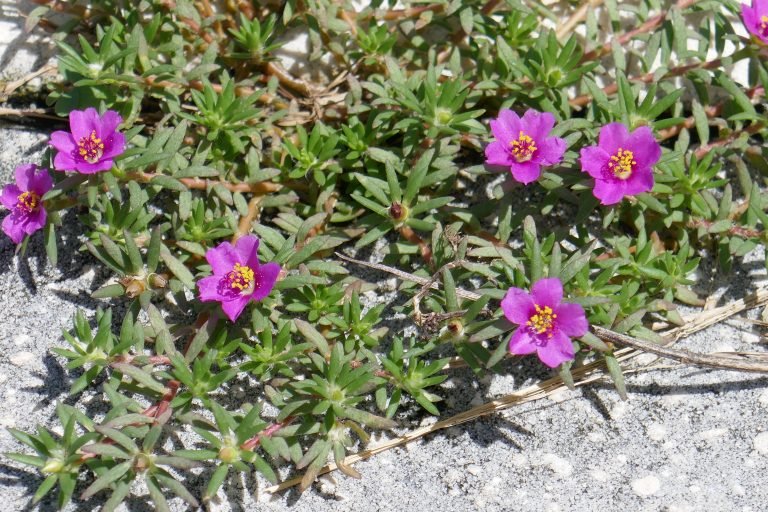
Latin Name: Portulaca pilosa
Common Names: rock rose
Family: It is in the Portulacaceae, or purslane, family.
Form: Small wildflower that creeps along the ground with fleshy and branched stems and leaves.
Leaves: Leaves are alternate, linear to spatulate, and very fleshy and thick.
Flowers: The small pink flowers appear in the spring, summer, and fall.
Habitat: It occurs in disturbed sites and sandy areas such as pinelands and flatwoods.
Native Range: Pink purslane is native to the following states: AL, AR, CO, FL, GA, HI, KS, LA, MO, MS, NC, NJ, NM, NV, OK, SC, TN, and TX.
Landscape Use: In the home landscape it can be used as a ground cover in areas where little else will grow. Once established it takes no care whatsoever.
Wildlife Uses: Small bees and flies use the nectar of this plant.
Propagation: It can be grown from seed or transplanted. These transplant very easily. No worries about removing flowers or reducing the upper foliage as long as you get most of the root.
Rosa palustris
(Swamp Rose)
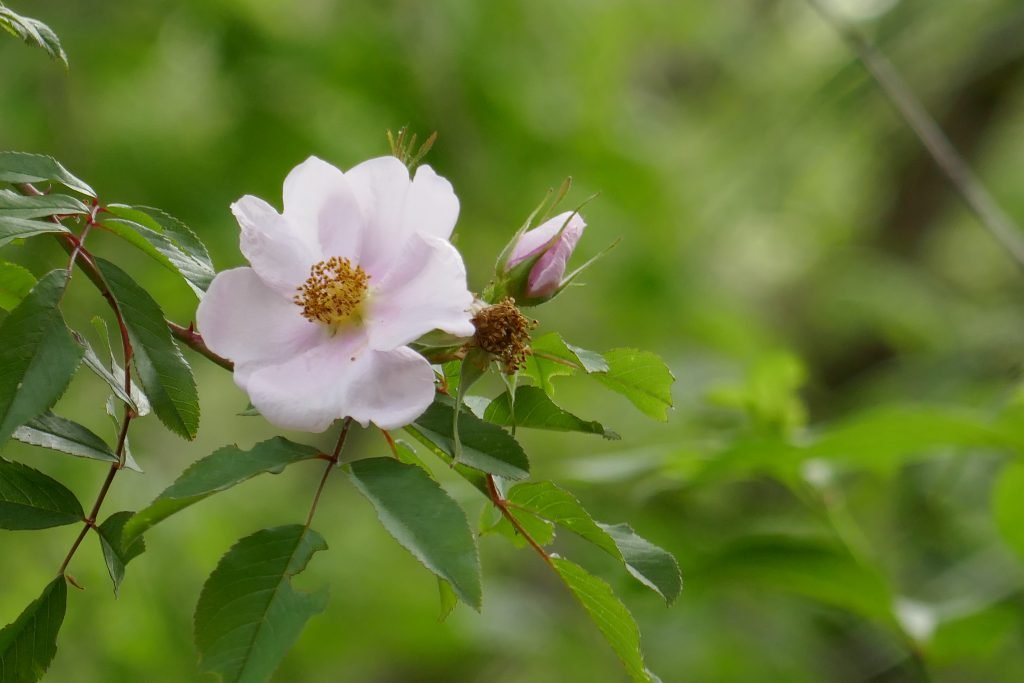
Latin Name: Rosa palustris
Common Names: Swamp rose
Family: It occurs in the Rosaceae, or rose, Family.
Form: Swamp rose is a thorny, deciduous, shrub that grows to about 6 feet in height or length.
Leaves: Leaves are alternate, odd-pinnately compound. Each leaf contains roughly 5 to 9 leaflets. Margins are toothed. Hairy stipules occur at the base of each leaf stalk.
Flowers: The flowers appear in late spring and early summer and are fragrant.
Habitat: It grows in the part shade of swamps, lake and pond edges, and along streams.
Native Range: Native to the following states: AL, AR, CT, DC, DE, FL, GA, IA, IL, IN, KY, MA, MD, ME, MI, MO, MS, NC, NH, NJ, NY, OH, PA, RI, SC, TN, VA, VT, WI, and WV.
Landscape Use: In the home landscape it is best in an out of the way place because of its thorns. It likes moist soil, but will drown in standing water. It will grow in high shifting shade, however, planting in full sun will produce more flowers.
Wildlife Uses: The flowers provide nectar for small butterflies and the rose hips are a food source for birds and small mammals.
Propagation: Root cuttings work the best. Swamp rose suckers so look for rooted stems coming up around the main plant. They may be as far away as six feet from the parent plant. These can be transplanted but be sure to remove flowers and buds to give the transplant energy to focus on recovery.
Stachys floridana
(Florida Betony)
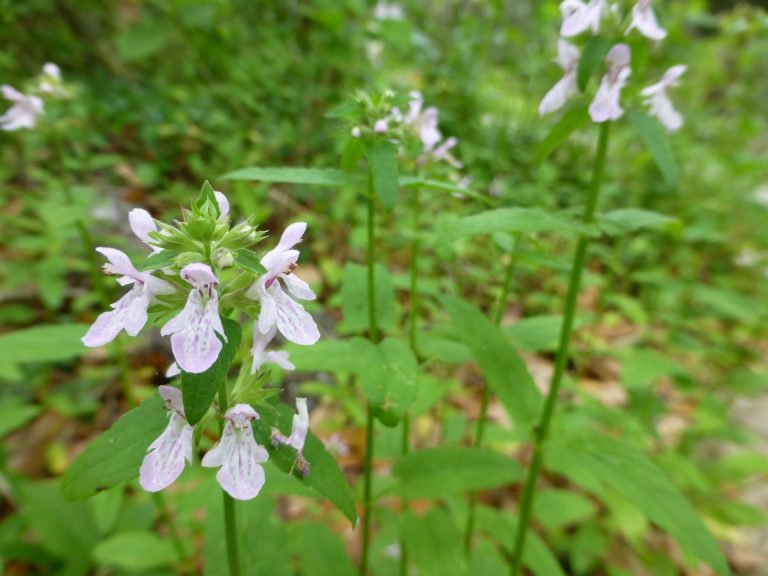
Latin Name: Stachys floridana
Common Names: Florida betony
Family: In the Lamiaceae, or mint, Family.
Form: A perennial wildflower that grows to a height of 1 1/2 feet tall.
Leaves: The leaves appear opposite are lanceolate in shape with shorts stalks and toothed margins.
Flowers: The pink flowers appear in the summer and fall.
Habitat: Its natural distribution in Florida is pine flatwoods, disturbed sites, roadsides, and open woods.
Native Range: It is native to the following states: AL, AR, FL, GA, LA, MS, NC, SC, TN, TX, and VA.
Landscape Use: In the home landscape it grows in part shade with average moisture.
Wildlife Uses: Bees and other small pollinators use the flowers for a source of nectar.
Propagation: This wildflower spreads by runners and tubers which are easy to transplant. It loves rich soil along roadsides so dig around the base of the plants to look for white radish looking tubers to transplant. The roots have segments that make them look similar to a rattlesnake rattle. The tubers are a favorite food of wild pigs so look for areas where they may have been digging them up. Humans can eat the tubers as well and make a great addition to a tossed salad. Just be sure to wash them well before consuming.
It can also be grown from seeds.
Symphyotrichum carolinianum
(Climbing aster)
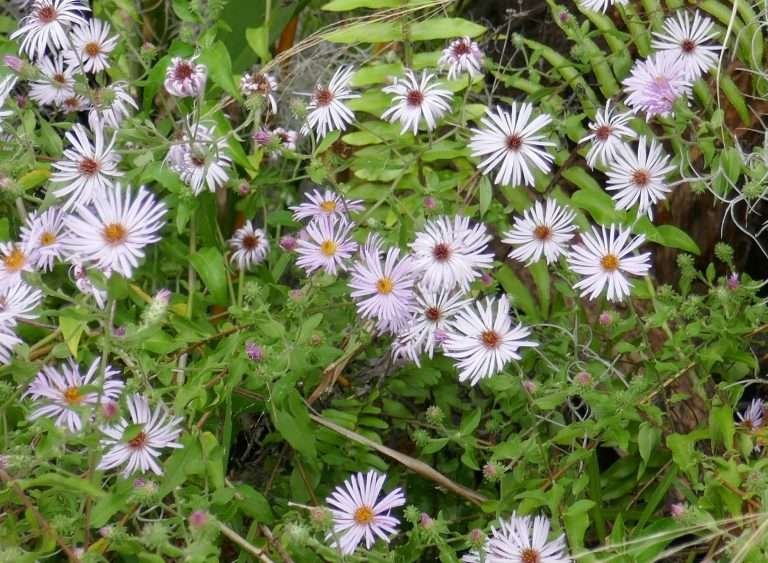
Common Names: Climbing aster, Carolina aster, and wild aster.
Family: Climbing aster is in the Asteraceae, or aster, Family.
Form: Climbing aster is a deciduous wildflower that grows like a trailing shrub. Its length reaches from 10 to 20 feet. It does have woody growth upon maturity.
A better name for this aster would be trailing aster because it really doesn’t climb by tendrils, like most vines do, so it sprawls and drapes itself around nearby vegetation. It can be trained upon a trellis or fence for support.
It is deciduous, but rarely loses its leaves for more than a few weeks during our coldest time of the year. In frost free areas it will tend to keep its leaves.
Leaves: The leaves are alternate. Their shape is generally elliptic to lanceolate with entire margins. Some leaf bases are clasping around the main stem. The apex (leaf tip) is very sharply pointed.
Flowers: The flowers appear all year, but are most prolific during late fall and early winter.
The flowers are approximately an inch across and have a very sweet fragrance.
Habitat: Climbing asters grow in moist areas like wet woods, stream banks, lake margins and other wet areas such as drainage ditches and wet fence rows.
Native Range: Climbing aster’s native range is Florida, Georgia, Mississippi, South Carolina and North Carolina.
Landscape Use: In the home landscape it grows in full sun with average to moist soils. It needs a good source of sunlight in order for it to produce flowers.
It does well along the edges of natural areas where it can clamber and trail along nearby vegetation. It can also be kept trained on a trellis.
The best scenario is to plant it near a water source, or wet problem area such as a drainage ditch, so that it won’t require any watering.
Wildlife Uses: The flowers are a source of nectar for many insects including bees, beetles, butterflies, flies, and wasps.
The rambling, and sprawling, growth can provide areas of cover for some wildlife.
Remaining seed heads may be eaten by small songbirds in winter when there are few seeds available for them to eat.
Propagation: Can be grown easily from seed, naturally occurring seedlings can be transplanted and root cuttings can be taken. For root cuttings trace the stem to the ground to locate a piece with at least a few roots in order to guarantee better survival.
They can be grown from seed however they require 2-3 months of cold stratification for their seed embryo to break dormancy.
Here's a great book for looking up Florida wildflowers by their color!
Nurseries That Sell Florida Native Plants
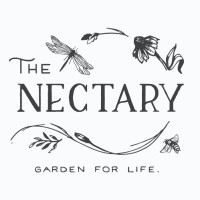
The Nectary
A native plant nursery that is open to the general public.
Thursday 11am-3pm
Fridays and Saturdays 9 am – 3 pm
They are located in Lakeland, Florida
1047 E. Main Street (863) 937-7879 TheNectaryLKLD@gmail.com
Use this link to get to Google Maps to show the location.
1047 E. Main St, Lakeland FL 33801

The Natives
I can’t recommend this nursery anymore. I bought over $300 worth of plants and they all died except for four of them. Two hackberries died! You honestly can’t kill those trees but they were in such poor condition they couldn’t survive. The prices were outrageous and all the plants looked half dead. The nursery manager, her name escapes me, pulled my order and didn’t let me choose my plants, and was snobby and rather mean. She couldn’t care less about me or what I wanted. It was – I pulled these take them or leave them attitude. People are no longer standing for this horrible treatment so your business needs to change … from customer service to your nursery stock.
When I showed up my order of plants was on the mat and looked like they needed to be thrown away NOT sold to a customer for exorbitant prices! They all looked half dead, but trying to be loyal to my friend Bill Bissett, and against my husband’s wishes, I paid over $300 for poorly cared for nursery stock!
A friend just recently has been trying to purchase native plants and is finding it nearly impossible. She has gone to two native plant events where she describes that plants as sickly looking weeds so refused to give them her hard earned money.
I have been loyal to the FANN and the FNPS for three decades, but no more. You guys need to change with the times. It’s 2025 get with the program and stop being elitist snobs! Provide the general public with plants that are worth their money and stop acting like you are the only ones that have knowledge about native plants. Anyone that can read can learn about natives … you guys don’t have the market on it!
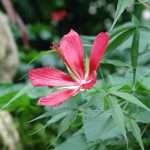
Mail Order Natives
We have provided native plants to wonderful people across the USA for 15 years. That is our mission! We also would like you to know our plants are NEVER collected from the wild. We grow all of our plants from seed or cuttings in our own facility. We will be adding extra plant selections over the next few months, so come back regularly. You can contact us at: 850-973-7371 (cell) and 850-971-5416 (fax).
A native plant nursery that ships plants through the mail.
They are located in Lee, Florida.
Their plants are the most gorgeous natives that I have ever purchased. Yes shipping can be expensive, but it is so worth it because of the quality of the plants. They also pack their orders with great care. I’ve been thrilled with every purchase and I’m sure you will be too.

Green Isle Gardens
Green Isle Gardens specializes in Florida native plants and wildflowers, with a focus on upland plant species. The nursery has 8 acres under production and features more than 150 species of native plants.
Our plants are grown without using pesticides with the goal of preserving nature, and all its critters, in mind. We encourage the use of pine straw mulch and offer bales for sale.
Green Isle Gardens is open to the public for retail sales.
Wednesday – Friday: 8am to 3:30pm
Saturday: 8am to 3pm
They are located in Groveland.
Green Isle Gardens
11303 Florida 33
Groveland, FL 34736
Use this link to go to Google Maps to show the location:
